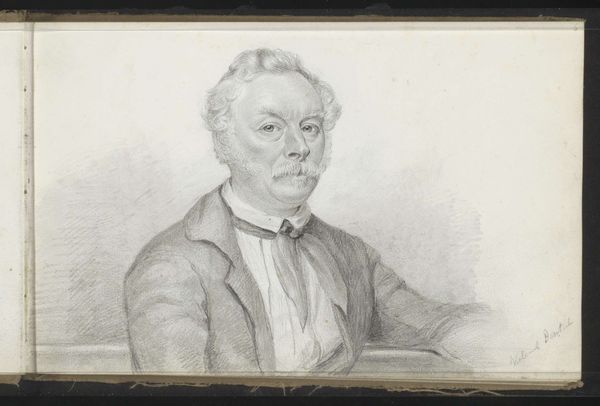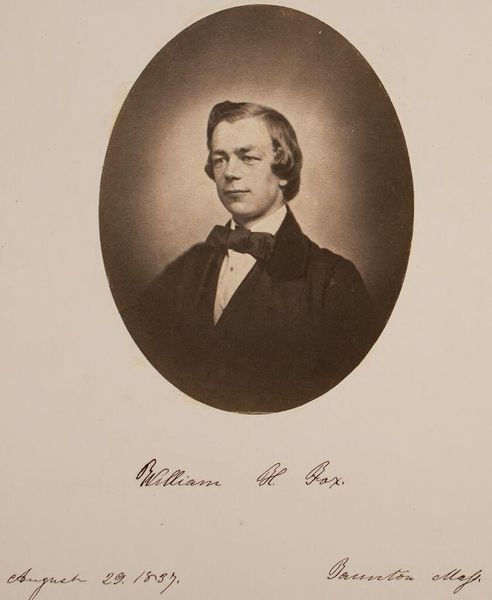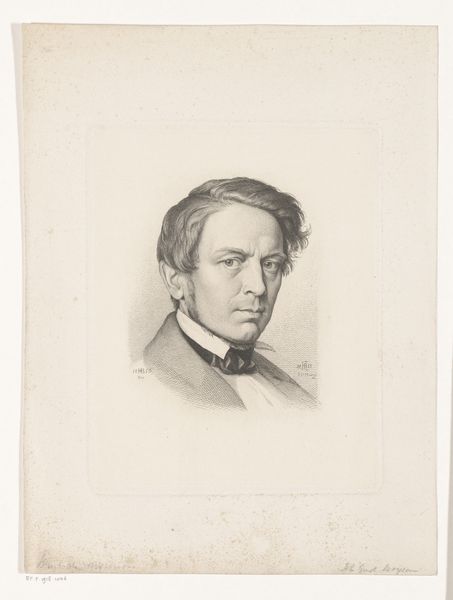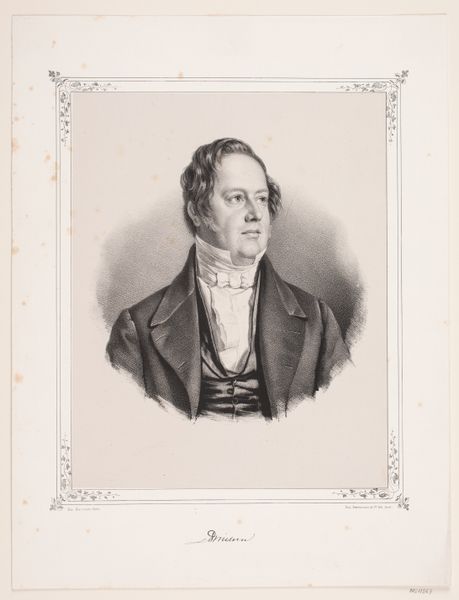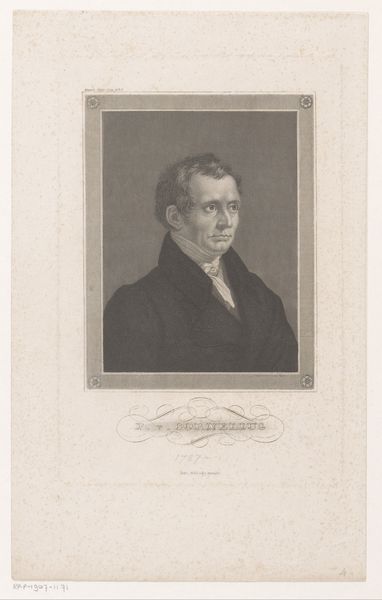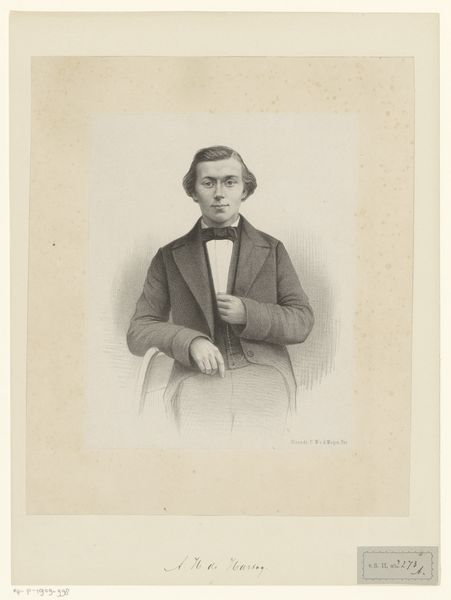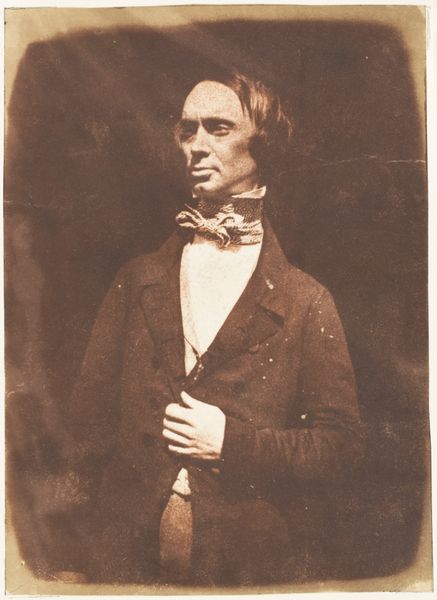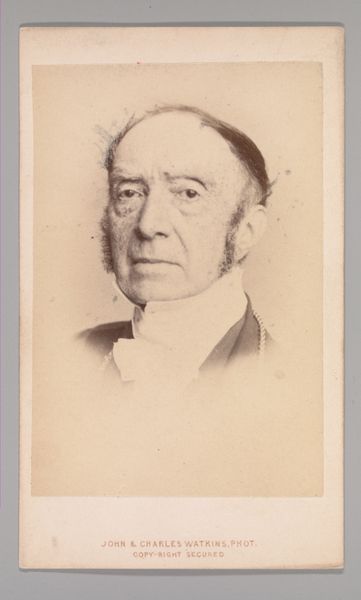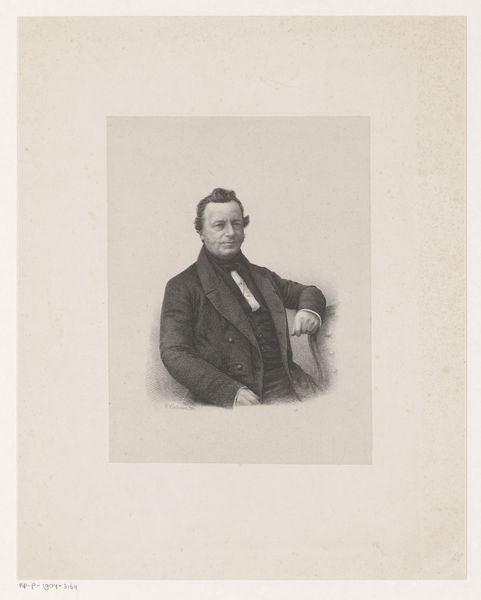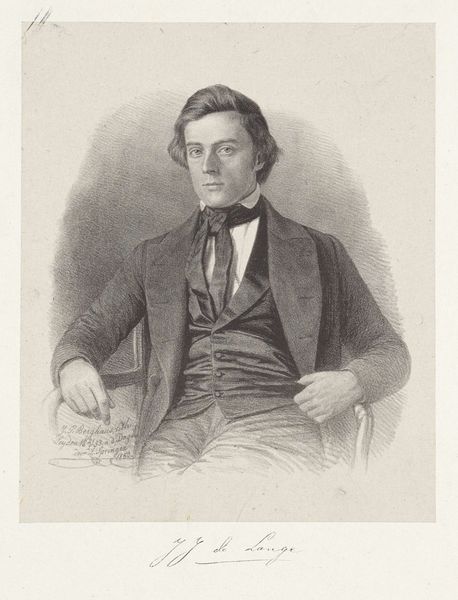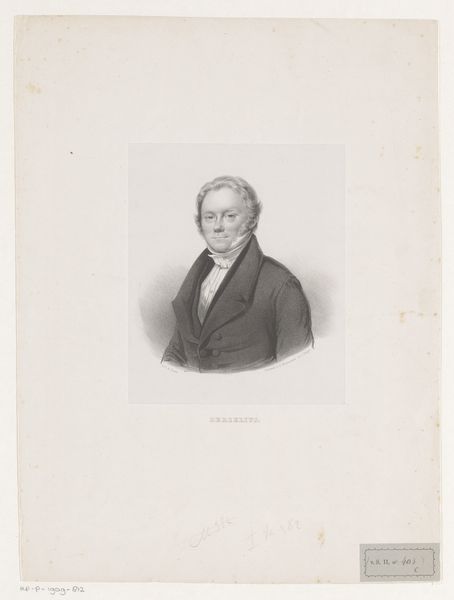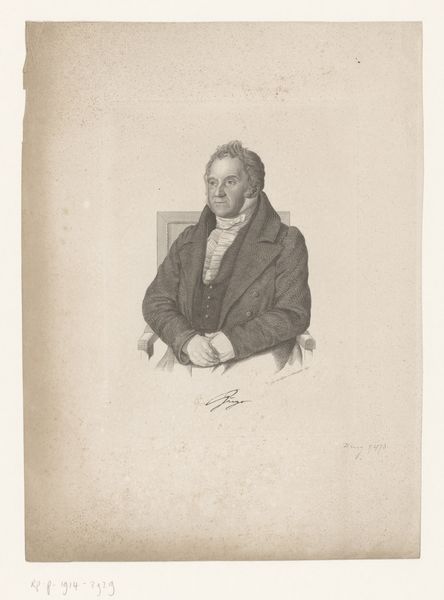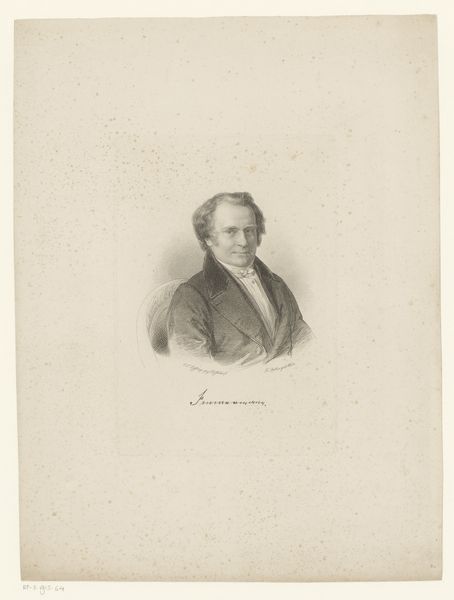
sculpture, marble
#
portrait
#
neoclacissism
#
sculpture
#
sculpture
#
black and white
#
marble
#
statue
Dimensions: 56.5 cm (height) (Netto)
Curator: Here we have a marble bust created by H.W. Bissen between 1835 and 1836. The piece, titled "Juristen A.S. Ørsted", is rendered in the Neoclassical style and currently resides here at the SMK, the Statens Museum for Kunst. Editor: It’s quite imposing, even in its stillness. There’s a gravity to his expression; the tight-lipped composure exudes authority and perhaps a hint of weariness. Curator: Precisely. The details Bissen captures contribute to the sense of authority. You can trace the slight furrowing of the brow, the subtle shadows around the eyes that bring us so much character through careful manipulation of this enduring marble. This wasn’t merely about likeness. It was about projecting an image. Editor: Definitely an image. I'm curious about this legal scholar A.S. Ørsted – what role did institutions like the Danish court play in solidifying the impact this artwork made? Curator: The subject, a prominent jurist, served in a period where the legal system was being reformed and refined. So this portrait reflects not just the man, but the socio-political weight of his profession and the intellectual climate of the time. Neoclassical sculptures served almost as secular icons, aligning leaders with ideals of Roman virtue and justice. Editor: This man, seemingly cast as a timeless paragon. Marble lends itself well to that. Its classical allusion is very potent, echoing through time, imbuing figures with lasting significance, doesn't it? Is it intended to convey the sitter’s unyielding conviction or perhaps subtly to evoke cultural memory itself? Curator: Both, I would argue. In that way, the cultural function is also one of psychological manipulation through these embedded historical signs. The symbols are powerful, even if unconsciously received by the public. It invites, demands perhaps, respect. Editor: Seeing it now through the lens of institutions, it strikes me as interesting to study which particular elites gained marble treatment. To put it bluntly, this piece isn’t just a sculpture. It’s a statement about who wielded symbolic power. Curator: Indeed, a powerful encapsulation of its time. Thank you, it has been helpful to see that cultural context come so visibly to life today. Editor: The pleasure was all mine; thank you for sharing. It truly casts the work in a fascinating light.
Comments
No comments
Be the first to comment and join the conversation on the ultimate creative platform.
